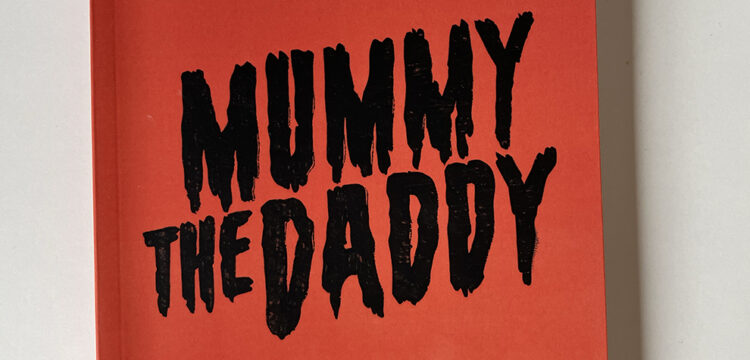Before There Were Fairies
Your Desire Burns, Our Secret Persists
Prima cʼerano le fate is a project initiated by expert of visual and performative arts Maria Chemello, that was hosted by LeGarageLab in Trento. The work resulted also in the book Your Desire Burns, Our Secret Persists with words and drawings by Maria Chemello, Angelica Stimpfl, Elina Christodoulaki, Annachiara Abram, Giulia Mantovani, Adriana Ghimp, Beatrice Commissari, Emma Rancan, Greta Moser, Silvia Marchi, Lucrezia Di Carne, Francesca Venezia, Eleonora Pedron, Michaela von der Heyde, Consuelo Donati, Sara Zanetti, Irene Leonardelli, Laura Valentinelli, Tessa Battisti, Sabrina Zotta, and a critical text by Laura Rositani. It was designed by Maria Chemello, Lucrezia Di Carne, Angelica Stimpfl, with Giulia Mantovani, Silvia Marchi, and Francesca Venezia, and printed by Press Press in 2023.
The book will be presented on Thursday 28th September at Libreria NOI in Milan, with a conversation moderated by Irene Facheris, while on Friday 29th Compulsive Archive will host a workshop.
Although it might be redundant and hazardous to begin reviewing a book in such a way, first thing I’d like to say is that the book Il tuo desiderio arde, il nostro segreto permane “Your Desire Burns, Our Secret Persists” is a jewel—for numerous reasons which I am going to try to enlist here (I hope I won’t forget any). As a matter of fact, we could even attempt to leaf through this book by listing its most precious aspects, for the sake of convenience I’ve chosen to pair them.
- Convocation & Friendship
This book begins with a transcription of an email written by the project’s initiator, Maria Chemello, to a group of friends, comrades and collaborators—namely Annachiara, Tessa, Elina, Beatrice, Lucrezia, Consuelo, Adriana, Irene, Giulia, Silvia, Greta, Eleonora, Emma, Angelica, Laura, Francesca, Michaela, Sara, and Sabrina—to invite them to more or less precise ideas for a series of gatherings around a very specific subject: the female figure and the mountain, and traces of ancient Alpin mythology which will be the pretext to spend time together to create “something magnificent”. This invitation is forwarded to nineteen women, thus this book is curated by twenty women, and made by few more, including design and critical essay. The email says that the first period will be dedicated to the creation of a collective piece of a large patchwork, to contain images and symbols inspired by the readings and the suggestions that everyone previously offered. The second period will instead be dedicated to the composition of a collective poem or tale or song, as a result of the shared time. Each voice will be recorded to become a sound piece, an oral intervention to be transmitted—gifted to others.
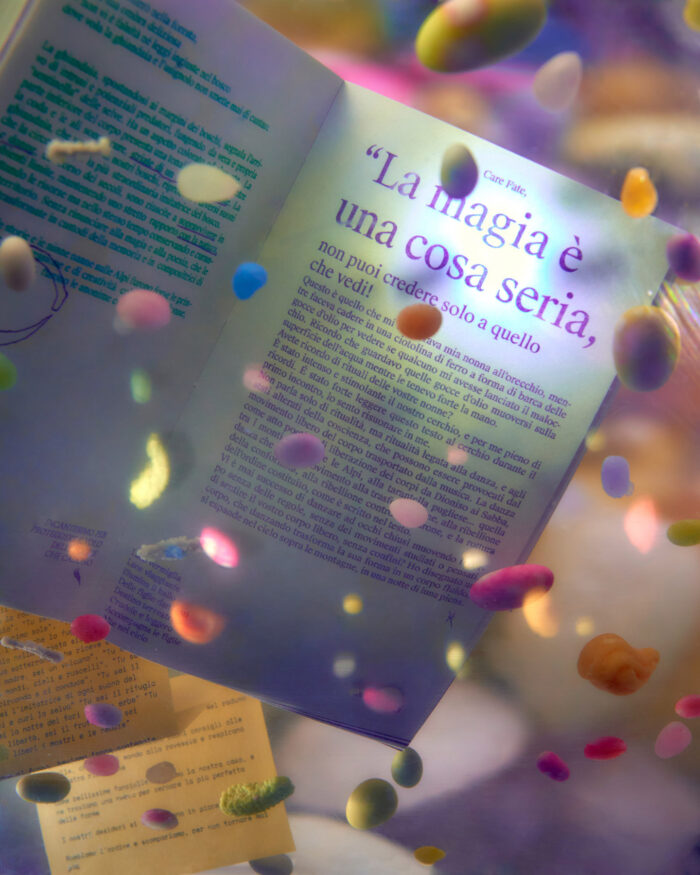
- Magic & Collectivity
At the very beginning Maria consigned a text collage to each attendee, and by doing so she just became one of them. In the whole project there’s much about attending—meant as being present at, but also accompanying, taking care, applying oneselves, and following—and bringing in everyone’s subjectivity and gaze as ways of reading, interpreting and looking. To me, this is just another way to say “doing magic.” The name of the collective “le fate” (fairies) says it all: “one of a class of supernatural beings, generally conceived as having a diminutive human form and possessing magical powers with which they intervene in human affairs.” In fact the book is both a collective exercise and a bibliography on a specific subject matter, as well as a record of a transformative experience: in order words it contains the formula of the incantation (what to say), the report of the ritual (how to do it), and the result (what happens next or what to expect). One very important aspect of the book is also the centrality of the question: “imagine being a person who’s born and raised on the mountain. You have to come down to the human world, but you know nothing about it (…) what would you ask?” It almost seems needless to say more about it, besides reiterating the importance of giving space to each other through our hesitations and doubts.
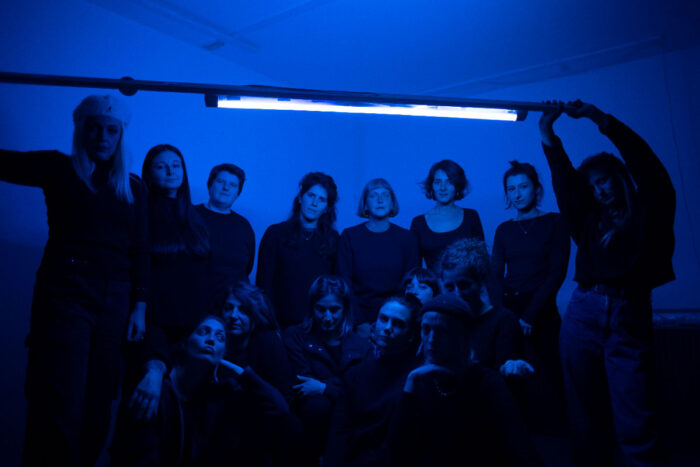
- Locality & Legacy
The supernatural aspect of the matter is the capacity to reconnect with the territory they inhabit and to access the knowledge that’s left by their ancestors, in the form of tales, beliefs, popular notions, books and folk sayings. It all has the same worth—meaning there’s no hierarchy in their validity, something that turns the whole operation in a political one. Through the preciousness of each voice, in several layers of time and subjectivities, the pact is sealed: a subject summons a bibliography and gifts it to a group of people, who then bring their own insights, either emotional or theoretical or by hearsay, but most importantly everyone offers their presence and time to embroider together a practice, that will be embodied eventually in a large piece of cloth, collectively stitched and produced during the meetings.
For instance, in the book Emma tells the story of the jay (ghiandaia), “who lives at the margins of the forest to give notice of intruders and possible predators, working as a proper ‘sentinel’ of the woods).” Elina tells me that the apple is “the fruit of the life trees, the one of knowledge of the good and bad. It holds a star with 5 tips that is shaped by its seeds, representing freedom and knowledge that makes you free”. These are all very generous bedtime stories but also collective legacies linked to customs and habits belonging to a specific landscape, going from the fairies’ bodies to appear in front of our eyes as we keep reading.
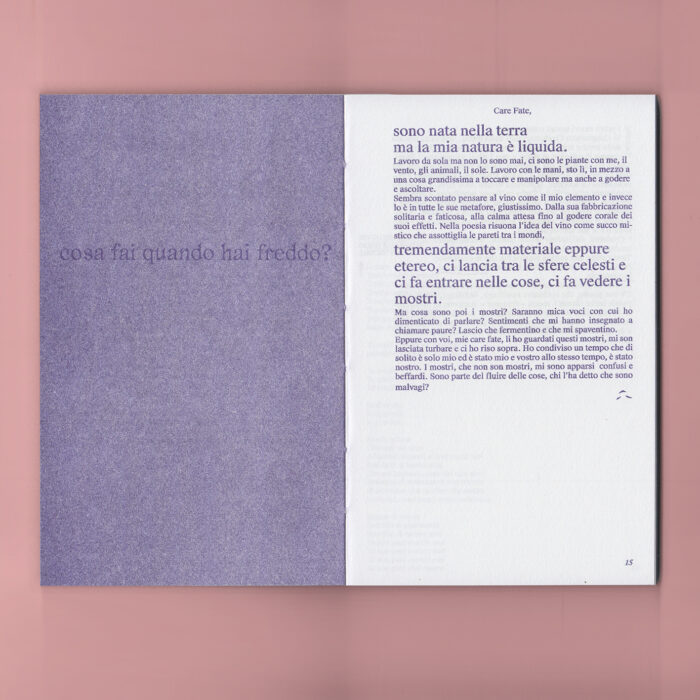
- Ecology & Craftsmanship
Indeed, each of the participants (thus the project at large) situates herself into a specific landscape, the one she usually inhabits, uses and crosses. The know-how is partly already embedded, and partly gathered and deepened on the occasion of the nocturnal gatherings. We might say that the mountain is herself the twenty-first attendee, as she brings everything she knows about the people who live on its slopes. The gaze is reciprocal. One of the oldest means of exchange between the mountain and the people has always been craftsmanship: the mountain lends her material to those who pay tribute to her by training their virtuous hands to shape beauty, to imitate nature, or simply to make something in return for their gratitude. The mountain soothes the eyes, cleans the air and gives water, there’s much to be grateful for. On the other hand, craftsmanship used to be also the most social of all activities, especially among women, when we consider large households and textile production, embroideries, weaving and knitting. But also it is one of the most solid forms of legacy and heritage, literally what a mother could physically produce to pass on to her daughter—as well as a practical knowledge and virtue, to teach someone else’s hand to produce a beautiful object from what’s gifted by nature.
Speaking of beautiful objects, I’d like to add a note here to try and describe what it feels like to hold the book in one’s hands: exactly as a gift the book comes wrapped in some thin paper tied with a string. The paper is soft and the binding is visible, there are some pearls hidden between the cover sheets, and the inside is risoprinted in two colors. This is to say that the attention that is put in the delivery is also very rich and big-hearted.
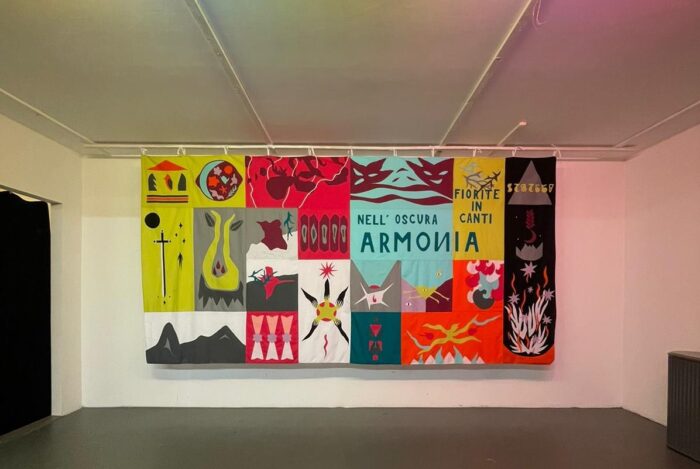
- Mondays & Incantation
The chosen day for the gatherings is Monday. Again I think this is also a very precise political choice: if what the fairies know best is to make incantations, magic, and how to break spells around human affairs, there’s no better way to save the most difficult day of the capitalist week, by providing collective care and relief just at the end of the first day of the working week. The most human of all current affairs. The promise and premise is to meet and share food before notions and labor. Then, each Monday there’s also the pleasure to bring what is dear to each, and she can write, draw or say it—gift it to everybody else. In fact, the book also provides a collection of enchantments, fascinations and charms—some coming from the grandmas’ recipes books and other from the heart of those who were writing them and their deepest desires, some others from the land, some are instructions, some are suggestions, some are riddles, some are dreams, some are pure poetry: maybe then Monday will never be bitter again, or if it will, we will exorcize it by trying to describe to the others all its tones and shades of bitterness, and repeat it until the nagging will turn into a prayer.
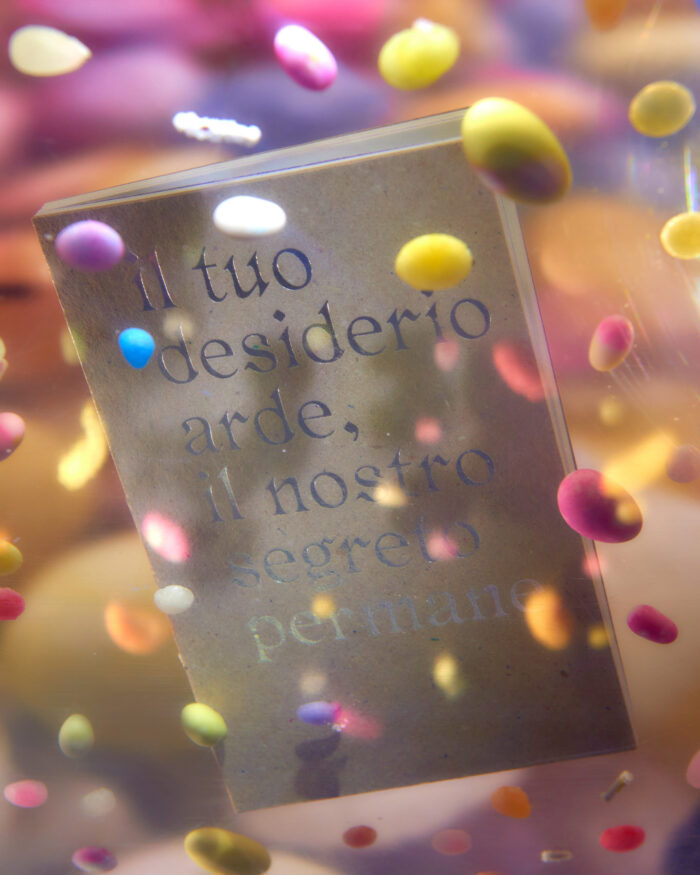
- Confidences & Letters
Most of the book takes the shape of an epistolary exchange, where the addressee is always the collective (care fate—Dear Fairies), to whom each fairy is telling personal impressions, anecdotes, and reflections, in an attempt to describe her feelings and to contribute to the assembly. I find this to be the most generous political positioning, as each and everyone stands up and speaks from her most intimate space, shielding herself as the magical being she is, who can be herself precisely because she comes as vulnerable as anyone else, that is, in this case, never alone. As simple as it might sound, trust is the magic powder to sprinkle on one’s back to commit to this swarm of flying shimmering creatures and to follow their hive. It is also the key to oral transmission, considering how a story—or an incantation is gifted to someone else in order for them to keep it, and make use of it when necessary.
“In an ideal parallel upside-down utopian world, I would have developed an alphabet only for ourselves, to give it to women so that they could communicate with no one else understanding”—one letter says. Well, I dare saying that by attending these meetings and filing this book, this happened automatically, because if we consider a non-hierarchical transmission of feelings and knowledge, in its most plentiful, intimate, and intuitive form, we make a language that is also a shelter, a balm, a letter, a magical alphabet, a collective incantation that works only when we trust one another.



